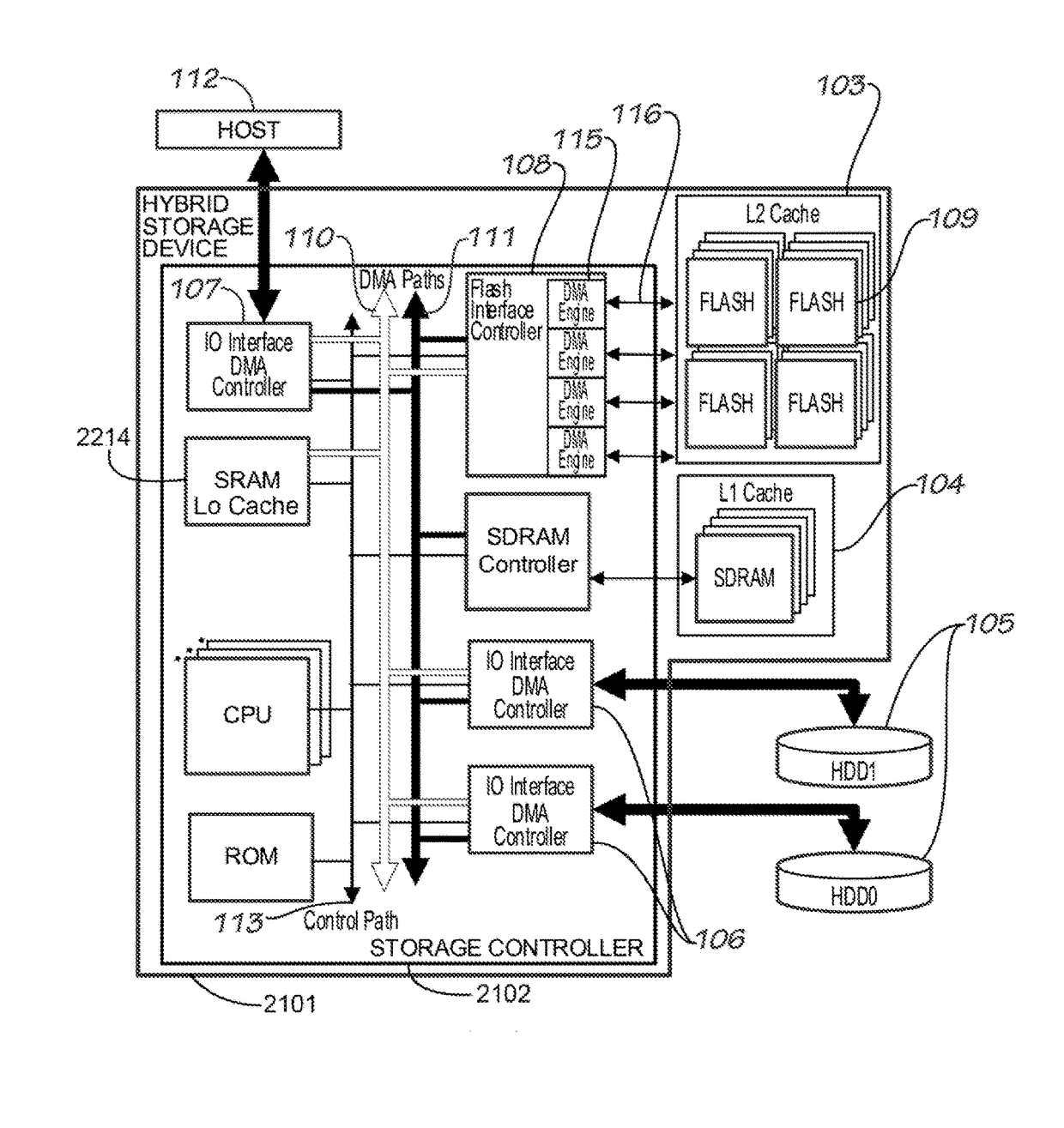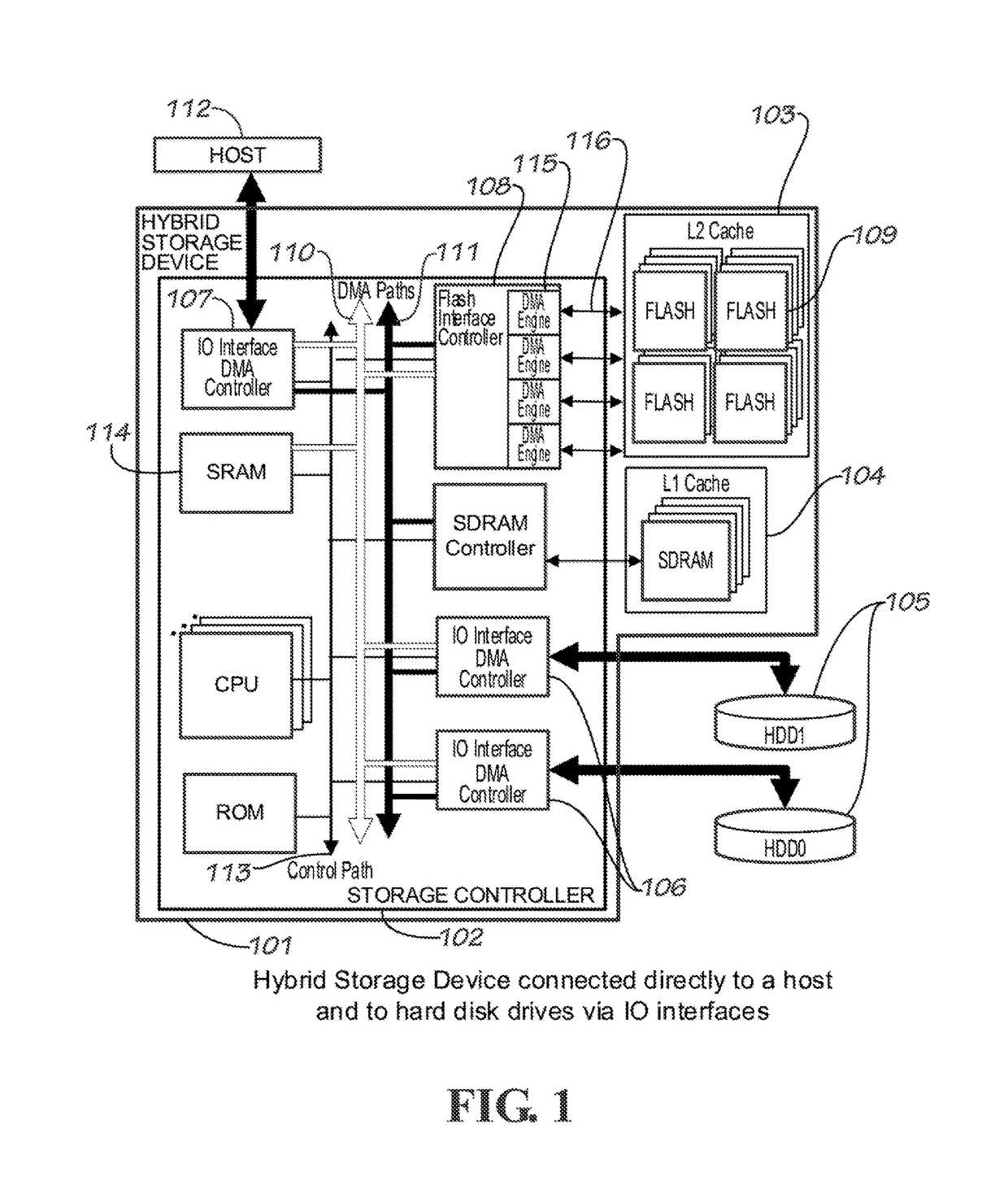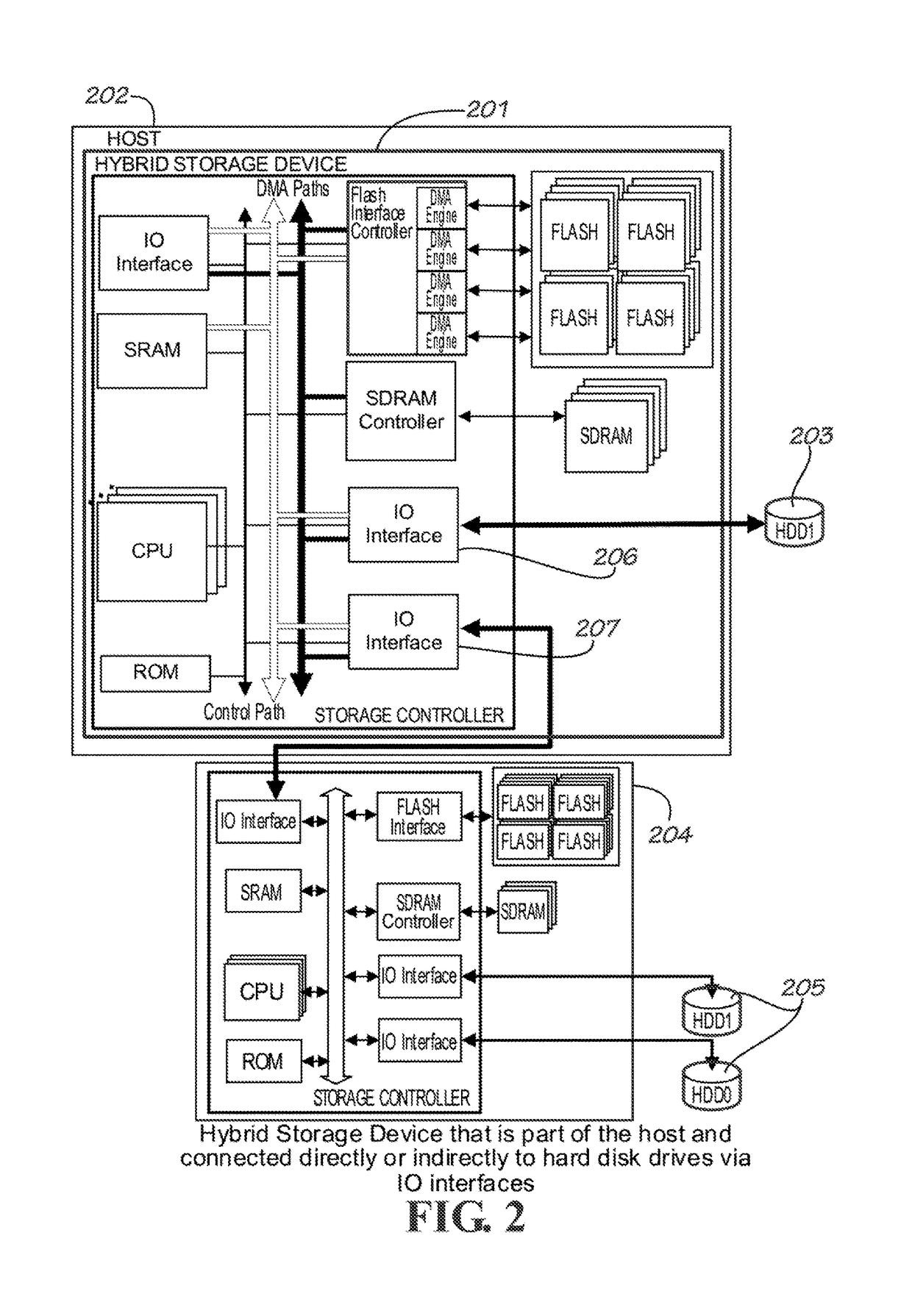Write buffering
a buffering and data technology, applied in the field of data management in a storage system, can solve the problems of system caching performance, failure to recognize possible improvements brought about by the solid-state drive architecture, and the storage system caching performance decline, so as to maximize concurrent data transfer operations, maximize parallel operations, and increase performance
- Summary
- Abstract
- Description
- Claims
- Application Information
AI Technical Summary
Benefits of technology
Problems solved by technology
Method used
Image
Examples
Embodiment Construction
[0044]Cache line is an unit of cache memory identified by a unique tag. A cache line consists of a number of host logical blocks identified by host logical block addresses (LBAs). Host LBA is the address of a unit of storage as seen by the host system. The size of a host logical block unit depends on the configuration set by the host. The most common size of a host logical block unit is 512 bytes, in which case the host sees storage in units of 512 bytes. The Cache Line Index is the sequential index of the cache line to which a specific LBA is mapped.
[0045]HDD LBA (Hard-Disk Drive LBA) is the address of a unit of storage as seen by the hard disk. In a system with a single drive, there is a one-to-one correspondence between the host LBA and the HDD LBA. In the case of multiple drives, host LBAs are usually distributed across the hard drives to take advantage of concurrent IO operations.
[0046]HDD Stripe is the unit of storage by which data are segmented across the hard drives. For exa...
PUM
 Login to View More
Login to View More Abstract
Description
Claims
Application Information
 Login to View More
Login to View More - R&D
- Intellectual Property
- Life Sciences
- Materials
- Tech Scout
- Unparalleled Data Quality
- Higher Quality Content
- 60% Fewer Hallucinations
Browse by: Latest US Patents, China's latest patents, Technical Efficacy Thesaurus, Application Domain, Technology Topic, Popular Technical Reports.
© 2025 PatSnap. All rights reserved.Legal|Privacy policy|Modern Slavery Act Transparency Statement|Sitemap|About US| Contact US: help@patsnap.com



